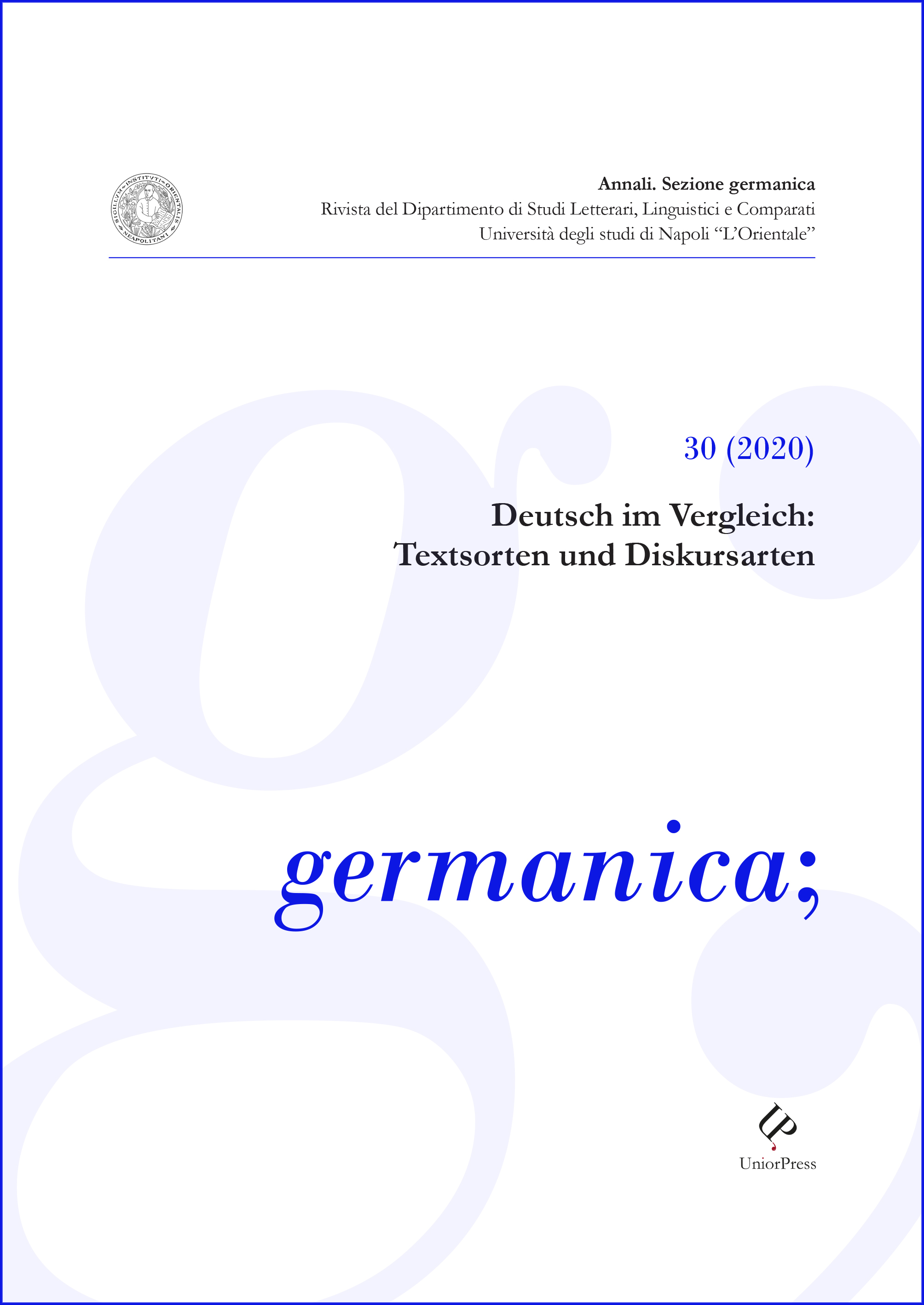Textlinguistische Gemeinsamkeiten und Unterschiede in einer deutsch-englischen Selbstübersetzung
DOI:
https://doi.org/10.6093/germanica.v0i30.8227Keywords:
Ruth Klüger, weiter leben, Still Alive, kontrastive linguistische Analyse, Thema-Rhema-GliederungAbstract
The object of this study is a contrastive analysis of the German (1992) and the self-translated English version (2001) of Ruth Klüger’s autobiography. Unlike the traditional method of contrastive linguistics, this study is a linguistic reflection on a written work and its self-translation. These are analyzed through text-linguistic questions by means of a grammatical-linguistic study, to identify analogies and divergences in the German and English language usage by the writer, and to highlight possible linguistic deviations from the standard structure. Especially the syntactic analysis aims at verifying whether and how, despite different realizations of the topic-comment structure, the information packaging is preserved in the translation. The analysis demonstrates that deviations from the unmarked sequence SVO in favor of the focus at the beginning of the sentence are mainly in German, while in English Klüger maintains the linear syntactic word order.
Downloads
Published
How to Cite
Issue
Section
License
The authors who publish in this Journal accept the following conditions:
- The authors retain the rights to their work and give the magazine the right to first publish the work, simultaneously licensed under a Creative Commons License - Attribution which allows others to share the work indicating the intellectual authorship and the first publication in this magazine.
- Authors may adhere to other non-exclusive license agreements for the distribution of the version of the published work (eg deposit it in an institutional archive or publish it in a monograph), provided that the first publication took place in this magazine.
- Authors can disseminate their work online (e.g. in institutional repositories or on their website) before and during the submission process, as it can lead to productive exchanges and increase citations of the published work (See The Effect of Open Access).


